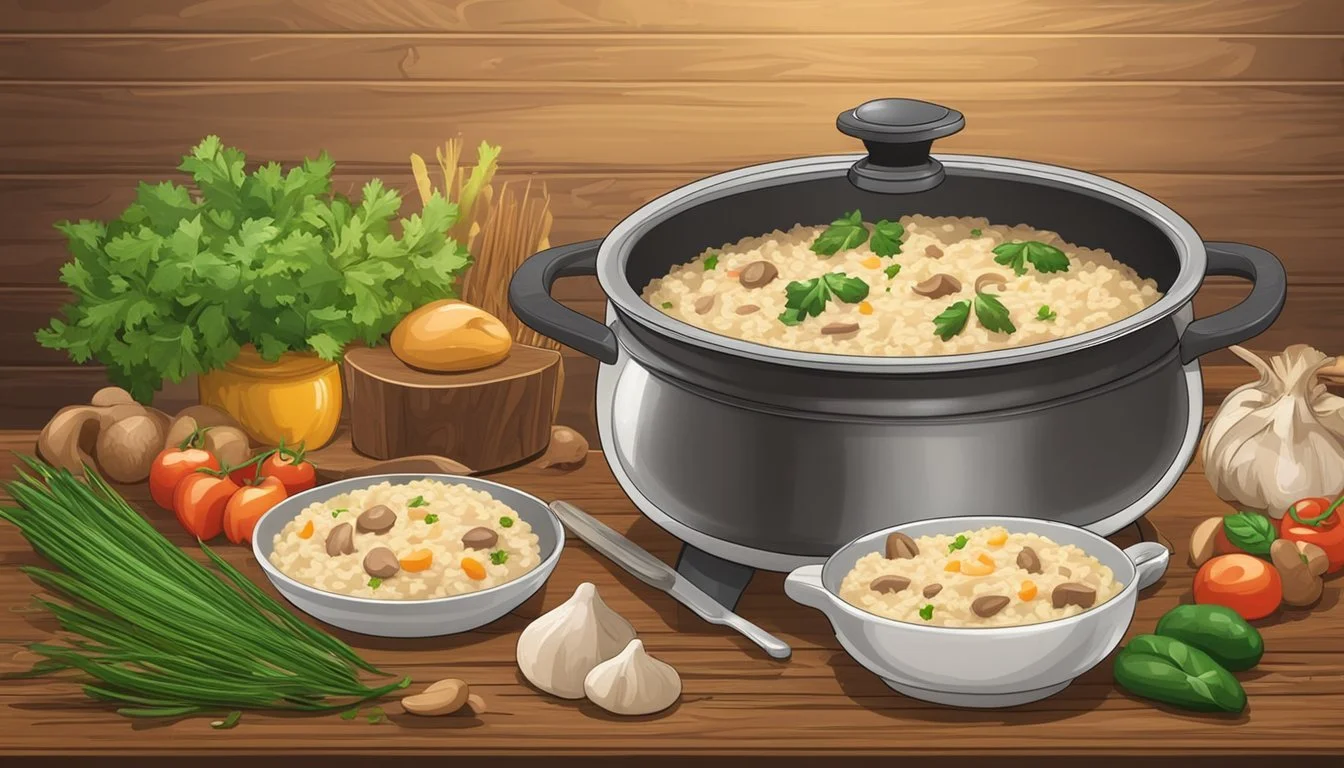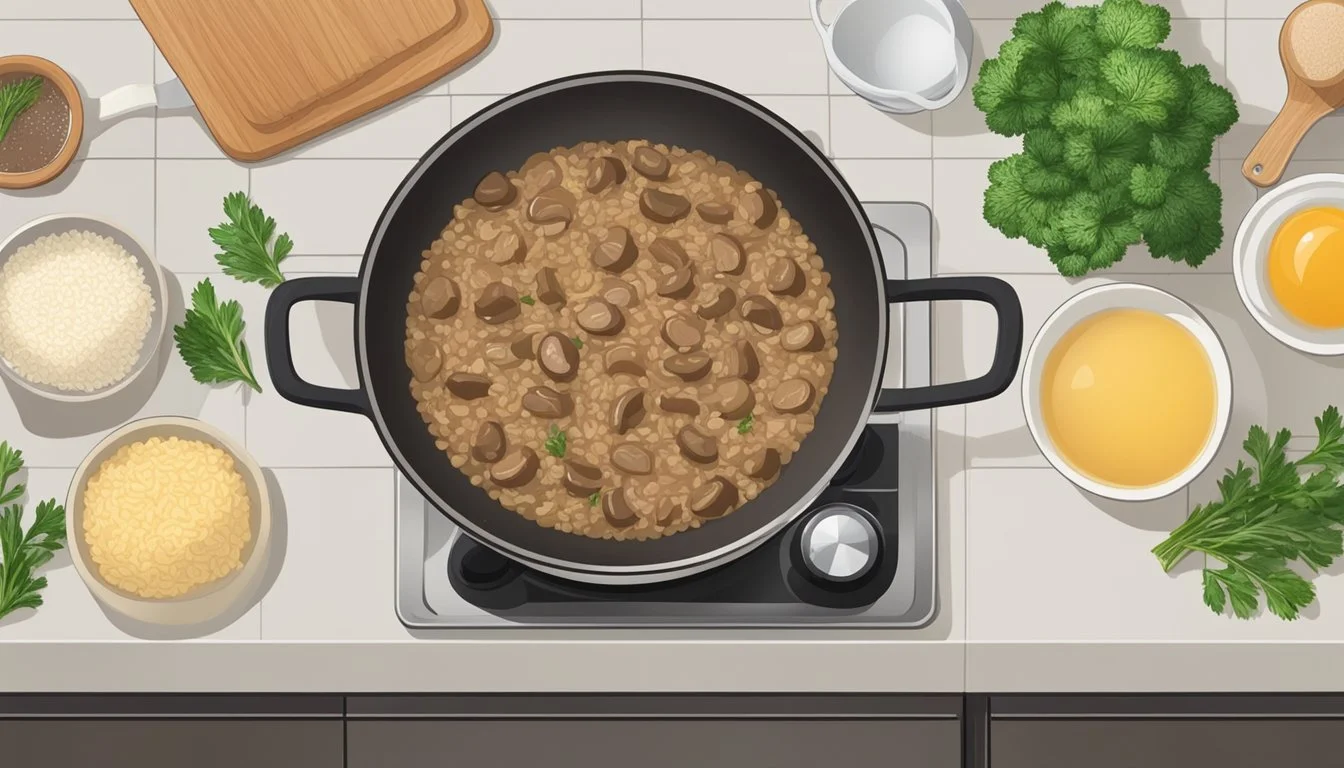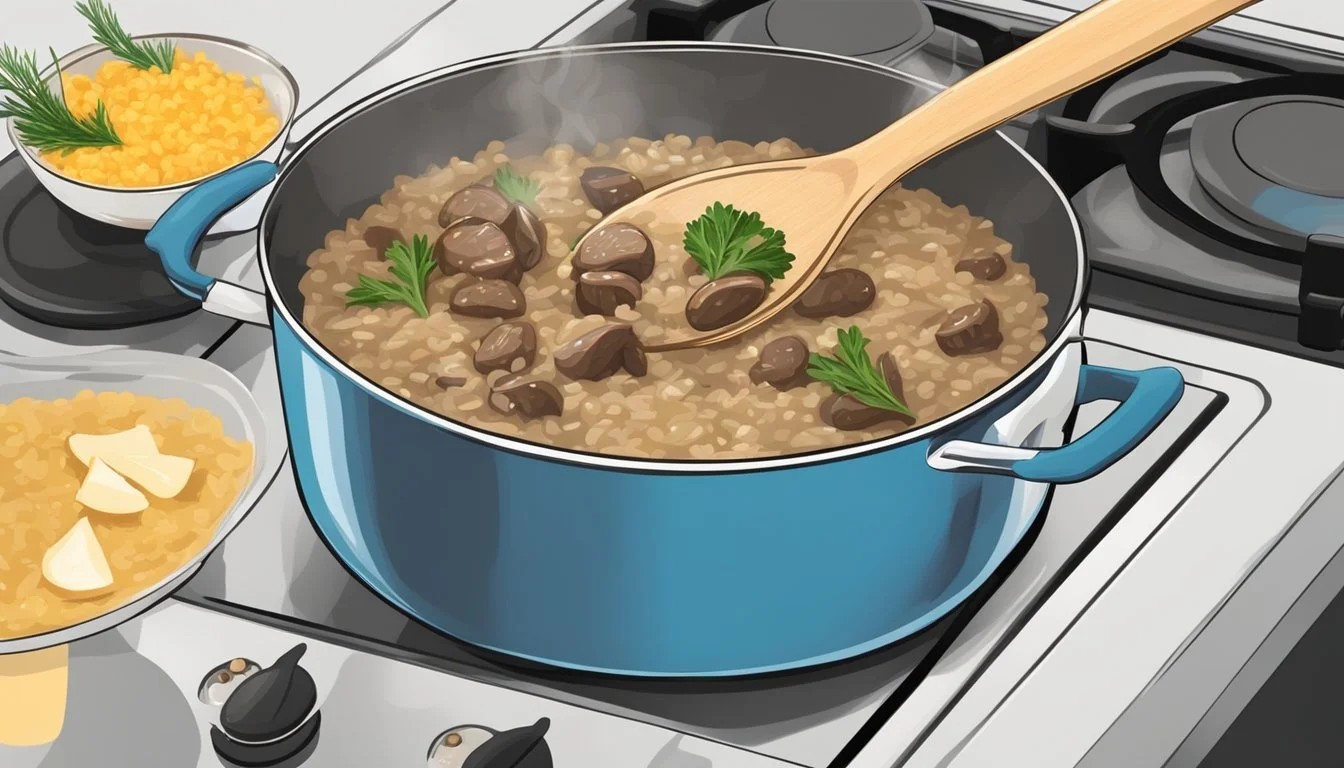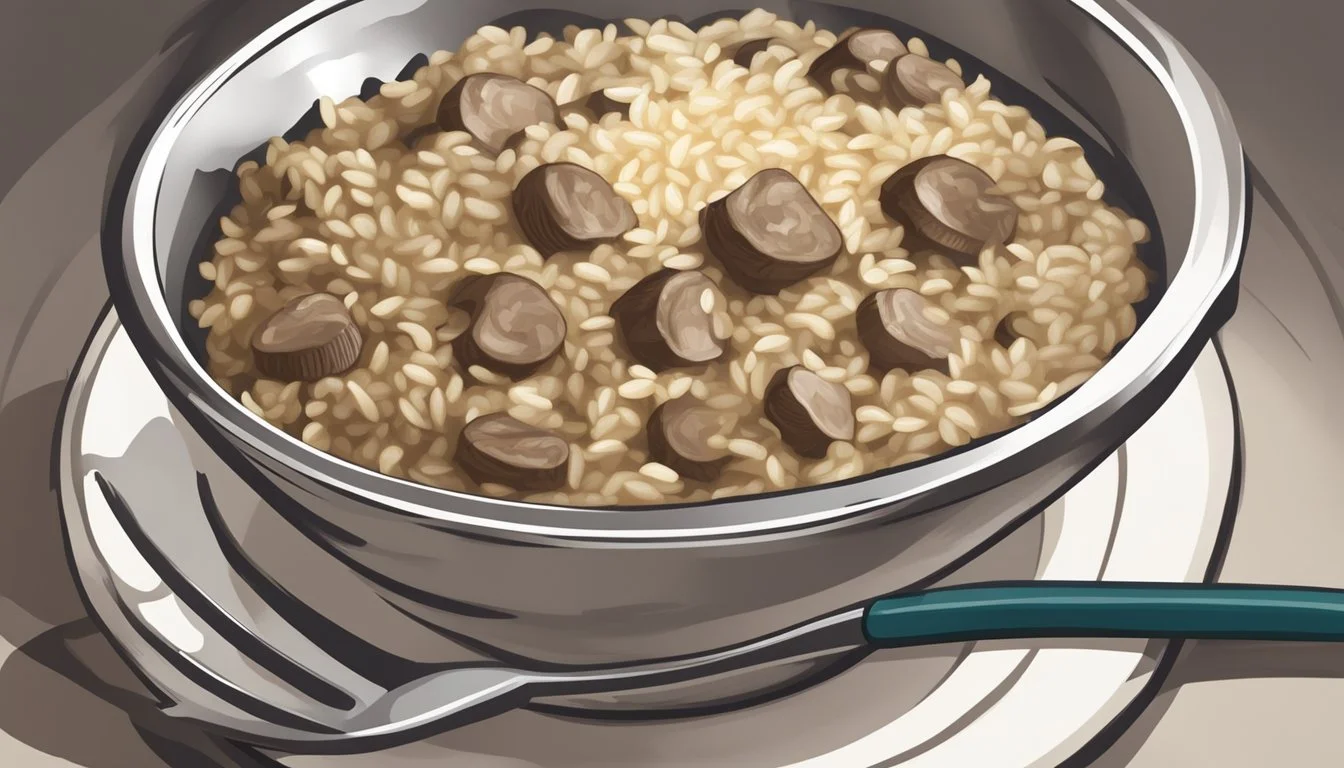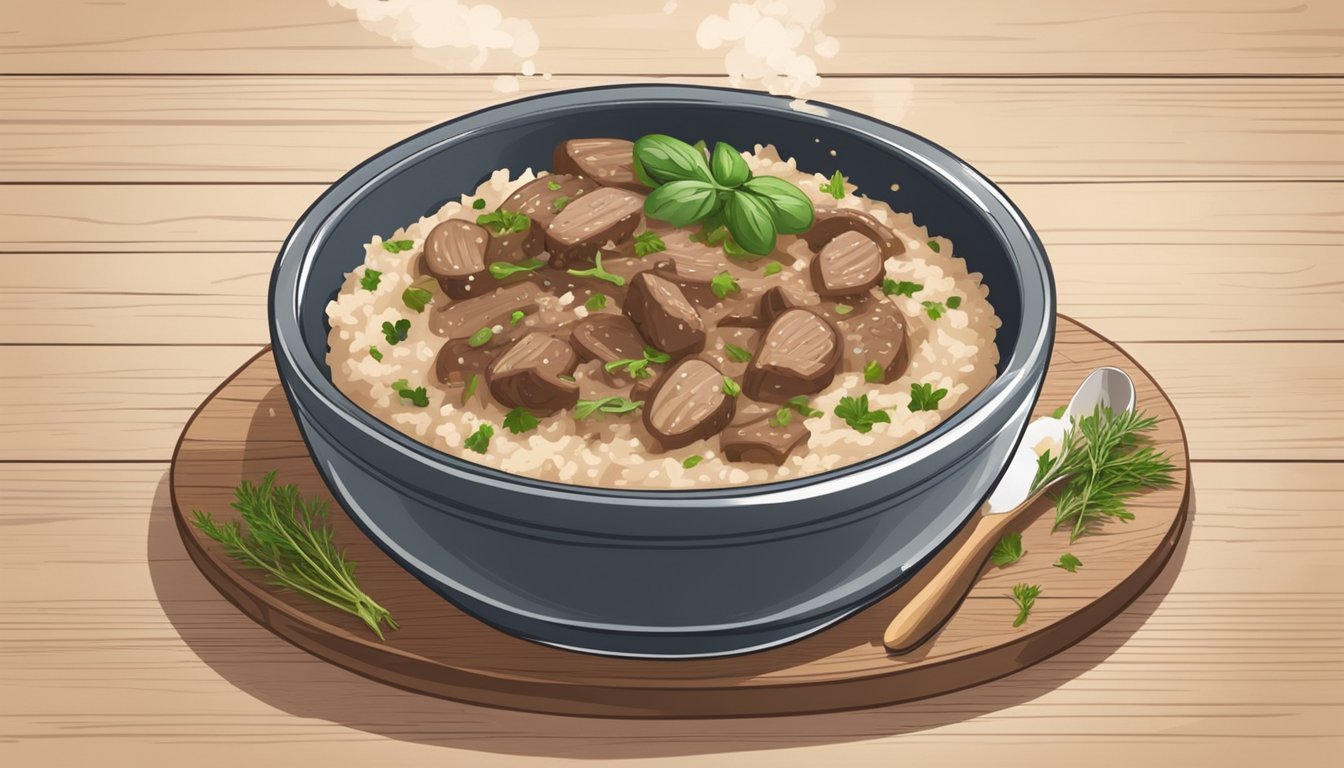How Long Does Beef and Mushroom Risotto Last?
Storage Tips and Safety
Beef and mushroom risotto combines tender beef, savory mushrooms, and creamy rice into a hearty main dish that easily becomes a comfort food favorite. When it comes to leftovers, knowing how long they will last can be essential for safe and enjoyable dining. Beef and mushroom risotto can be stored in the refrigerator for up to 3-4 days, ensuring that you have enough time to savor its rich flavors without compromising safety.
This dish is perfect for meal prep, allowing you to enjoy a comforting bowl of risotto on a busy weeknight. For optimal freshness, make sure to store the leftovers in an airtight container and reheat thoroughly before serving. You can extend its shelf life by freezing portions, where it can last for up to two months.
Having a reliable answer to how long beef and mushroom risotto lasts helps in planning your meals efficiently. It allows you to enjoy this delicious dish repeatedly without any worries about food safety.
Ingredients and Risotto Basics
Creating a delicious beef and mushroom risotto involves understanding the key components, the right selection of beef, types of mushrooms to use, and the vital role of broth in the dish.
Risotto Components
A traditional risotto starts with arborio rice, known for its firm, creamy texture. High-starch content in arborio rice makes it ideal for achieving the desired creaminess. Olive oil and butter are crucial for sautéing ingredients and adding richness.
Garlic and shallots provide a base flavor that enhances the overall taste. Additional ingredients like parmesan and white wine bring depth and complexity.
Beef Selection for Risotto
For beef and mushroom risotto, the cut of beef is essential. Choosing tender cuts like sirloin or tenderloin ensures quick cooking and a soft texture. The beef is often cut into bite-sized strips or small chunks to blend seamlessly with the rice.
Seasoning with salt and black pepper before cooking enhances the beef’s flavor. Lightly browning the beef in olive oil seals in the juices, enriching the risotto.
Types of Mushrooms in Risotto
Mushrooms are a fundamental ingredient, imparting an earthy flavor. Varieties like cremini, portobello, and shiitake work well, each contributing unique tastes and textures.
Dried mushrooms can be rehydrated and used along with their soaking liquid, adding an intensified mushroom flavor. The mushrooms are typically sautéed with garlic and shallots to release their flavors before mixing with the rice.
Role of Broth in Risotto
Broth is the liquid that cooks the rice and builds the risotto’s flavor profile. Beef broth complements the dish, but chicken or vegetable broth can also be used. The broth should be hot and added incrementally, about a ladleful at a time, allowing the rice to absorb it slowly and release its starch.
Constant stirring ensures even cooking and prevents sticking. The final consistency should be creamy and slightly al dente.
By understanding these components and their roles, one can create a balanced and flavorful beef and mushroom risotto.
Cooking Process
Creating a delicious beef and mushroom risotto involves crucial steps that ensure the proper flavor and creamy texture. This section covers the essential techniques and ingredients to achieve a perfect risotto.
Preparing Beef and Mushroom Risotto
Begin by slicing the beef into 1/4-inch slices and then into 1/2-inch wide strips. Season the beef with salt and black pepper. Heat olive oil in a large pot over medium-high heat and brown the beef for about 4 minutes.
Remove the beef and set it aside. In the same pot, add butter and olive oil, then sauté diced white onion, shallots, and garlic until soft.
Add mushrooms and cook until they are tender and reduced in size. Return the beef to the pot, ensuring it’s fully incorporated with the mushrooms and other ingredients.
Achieving Creamy Texture
The key to a creamy risotto is continuous stirring and gradually adding hot stock. Start by adding Arborio rice to the pot and toasting it for a few minutes until slightly translucent.
Begin adding warm beef or vegetable stock one ladle at a time, allowing the rice to absorb the liquid before adding more. Stir frequently to release the rice’s starch, which contributes to the creaminess.
Maintain a gentle simmer throughout the cooking process to ensure even cooking and to prevent the rice from becoming mushy. Once the rice achieves a soft but firm texture, remove from heat and stir in butter and grated parmesan cheese.
Wine and Flavor Enhancement
Adding wine to risotto enhances its depth of flavor. After toasting the rice, pour in a half cup of white wine and let it evaporate before adding stock.
This adds a mild acidity that complements the richness of the risotto. Season with salt and black pepper, tasting frequently to ensure a balanced flavor.
For an additional layer of flavor, consider using a mix of fresh and dried mushrooms. Incorporate garlic early in the cooking process and finish the dish with a sprinkle of fresh parsley.
Storage Guidelines
Storing beef and mushroom risotto properly ensures that it remains safe to eat and retains its flavor and texture. Below are detailed instructions on keeping this dish in optimal condition, whether refrigerated or frozen.
Optimal Conditions for Storage
For leftover risotto, refrigeration is key. Transfer the risotto into an airtight container immediately after cooling to room temperature. This inhibits bacterial growth and keeps the dish fresh.
Risotto can be safely stored in the refrigerator for up to 3-4 days. Make sure the temperature is set to below 40°F (4°C). Label the container with the preparation date to monitor how long it has been stored.
When removing portions from the refrigerator, only take what is needed and reheat thoroughly before consumption. This ensures that any potential bacteria are eliminated.
Freezing Risotto
To extend the shelf life of beef and mushroom risotto, freezing is an excellent option. Allow the risotto to cool completely before transferring it to a heavy-duty freezer bag or airtight container. This prevents freezer burn and the formation of ice crystals.
For best results, remove excess air from freezer bags before sealing. Label each bag or container with the preparation date. Frozen risotto retains its quality for 2-3 months when stored properly.
When ready to use, thaw the risotto in the refrigerator overnight. Reheat on the stove, adding a bit of broth or water to restore its original creamy texture.
Shelf Life and Safety
Beef and mushroom risotto, like many prepared dishes, requires proper storage to ensure it remains safe to eat and retains its quality. Attention to refrigeration and handling can help prevent foodborne illnesses such as those caused by Bacillus Cereus.
Refrigeration Duration
Refrigerator: Store beef and mushroom risotto in an airtight container. It typically lasts for up to 3-4 days in the refrigerator. Ensure the fridge temperature stays below 40°F (4°C).
Freezing: For longer storage, freeze the risotto in an airtight container or heavy-duty freezer bag. Properly frozen, it can last for 2-3 months. Label containers with the date for tracking purposes.
Safety Tip: Always cool the risotto to room temperature before refrigerating or freezing. This prevents bacterial growth. Reheat thoroughly to at least 165°F (74°C) to ensure safety. Avoid leaving leftovers out at room temperature for more than 2 hours to reduce the risk of food poisoning.
Reheating Guidelines
Reheating risotto requires attention to maintain its creamy texture and flavors. Key methods include using the microwave, stove, and oven, with specific practices to enhance quality.
Methods and Best Practices
Microwave: Place the leftover risotto in a microwave-safe dish. Add a bit of broth or water to add moisture. Cover the dish loosely with a microwave-safe lid or damp paper towel. Heat in 30-second intervals, stirring each time to ensure even heating.
Stove: Reheat risotto on a stovetop by placing it in a pot with a small amount of broth or water. Heat on medium-low, stirring frequently until the risotto reaches the desired temperature. This method helps maintain a creamy texture.
Oven: Preheat the oven to about 350°F (175°C). Transfer the risotto to an oven-safe dish and cover it. Heat for 10-15 minutes, checking occasionally to prevent drying out.
Maintaining Quality and Texture While Reheating
Use low-sodium broth for reheating to avoid an overly salty dish. Adding butter or grated cheese can enhance the taste when reheating. These additions improve the richness and flavor profile.
Stirring frequently, especially when using a microwave or stove, ensures even heating and prevents clumping. For better texture, avoid overheating, which can make the risotto dry and less creamy.
Lastly, always cover the risotto while reheating. This helps retain moisture and prevents the dish from becoming dry. Whether using a microwave, stove, or oven, a light cover facilitates even warming and creamy consistency.
Nutritional Information
Beef and mushroom risotto is a hearty dish with substantial caloric content and varied nutritional elements. It is important to consider its contribution to daily dietary intake, especially concerning macronutrients and key health factors.
Caloric Content Analysis
A 100-gram serving of beef and mushroom risotto typically contains around 368 calories. This amount is derived from a balance of macronutrients:
Protein: Approximately 12.3g
Fat: Roughly 6.1g
Carbohydrates: About 66.7g
These values can vary depending on the specific ingredients and preparation methods used. For those counting their caloric intake, it's significant to note that this dish provides a moderate to high calorie density, contributing to energy needs.
Dietary Considerations
When examining the dietary aspects of beef and mushroom risotto, it's essential to look at the sodium and fat content among other components.
Sodium: High, at around 1193mg per 100g serving, which might be a concern for those monitoring salt intake.
Sugar: Minimal, typically around 7g, making it relatively low in sugars.
Fiber: Nearly 0g, indicating the need to complement this meal with fiber-rich vegetables or side dishes.
These nutritional facts suggest that while beef and mushroom risotto is rich in protein and carbohydrates, it should be consumed in moderation due to its high sodium content and limited fiber.
Serving Suggestions
When serving beef and mushroom risotto, there are specific pairings and garnishes that can greatly enhance the dining experience.
Appropriate Pairings
Beef and mushroom risotto pairs well with a variety of dishes. Side vegetables, such as roasted asparagus or steamed green beans, add a nutritious component that complements the richness of the risotto. For those who enjoy combining flavors, a light arugula salad with lemon vinaigrette offers a fresh contrast.
Fish can also make a surprising yet delightful partner to beef and mushroom risotto. Grilled or baked white fish, like halibut or cod, provides a mild flavor that doesn't overpower the risotto.
Serve as a main course with a crusty bread, ideally a baguette or ciabatta, which can be used to soak up the creamy sauce.
Garnishes and Final Touches
Finish the beef and mushroom risotto with thoughtful garnishes. Fresh herbs like parsley or chives can add a touch of color and a burst of flavor. An essential topping is shredded Parmesan cheese, which enhances the dish with its umami richness.
A light drizzle of truffle oil can elevate the aroma, making the dining experience more luxurious. Additionally, a few twists of freshly ground black pepper will provide a subtle kick.
Consider a sprinkle of lemon zest for a hint of acidity that balances the risotto's richness.

